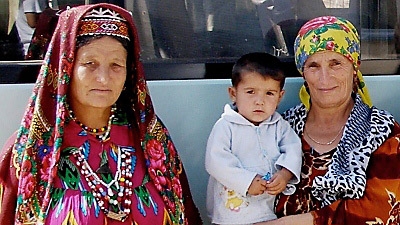WASHINGTON - Empowering women and giving them a voice are vital in unleashing their full productive potential. Europe and Central Asia has come a long way in this regard – women in the region enjoy larger freedoms than women in other regions and have a good amount of say about their lives. But more can be done to help women with issues such as domestic violence and having a positive influence on society.
These topics, among others, are the focus of a new World Bank report entitled “Voice and Agency: Empowering Women and Girls for Shared Prosperity.”
A handful of issues are of the utmost priority globally:
- Gender-based violence – This affects women across the world. About 21 percent of women in North America undergo physical or sexual violence, while 43 percent face the same problems in South Asia. That number stands at 29 percent in Europe and Central Asia, according to the report.
- Many girls have limited control over their sexual and reproductive rights – Each year one in five girls in developing countries becomes pregnant before turning 18, and pregnancy-related causes are the largest contributor to mortality of girls aged 15 to 19.
- Fewer women than men own land and housing – This differential varies and in many countries, women can access land only through male relatives.
- Women are underrepresented in formal politics and positions of power – Globally, women account for less than 22 percent of parliamentarians and fewer than 5 percent of mayors, but these numbers vary across countries and regions.
Of these, gender-based violence, gender inequality in legislation, and the underrepresentation of women in politics and positions of power are most relevant in Europe and Central Asia.
Data from 2012 reveals that the share of women who have experienced physical and/or sexual violence since the age of 15 ranges from 19 percent in Poland to 39 percent in Latvia (data from 2014 EU-wide assessment of domestic violence by the EU Agency for Fundamental Rights). While many countries have enacted legislation on domestic violence and provide services for victims, implementation and resources vary within and across countries. Four of the 16 countries in the region for which the Women, Business and the Law database by the IFC provides data do not have legislation that specifically addresses domestic violence.
- Legal differentiations reflect the most obvious institutionalized barriers to women’s agency. In these cases, women legally do not have the same rights as men. As the Women, Business & the Law study outlines, the barriers can restrict women’s ability to access institutions, own or use property, build credit, or get a job. For example, in Russia there are laws restricting women from working in 456 different jobs.
- Only 19 percent of government ministers in the region were women in 2012, and the share of women in parliament ranges from 9 percent in Hungary to 34 percent in FYR Macedonia. Additionally, the share of firms with female managers ranges from 0.3 percent in Kosovo to 33 percent in Belarus (BEEPS Survey data).
- Women in the region also face persisting inequalities in access to economic opportunities. These include unequal labor force participation rates, sector and occupational segregation, a gender pay gap, and low representation in leadership. The inequality of opportunity that women face demonstrates a constraint to agency, and a lack of economic autonomy may limit women’s voices in the household.
In all of these areas, better gender disaggregated data is required. The current lack of data makes it difficult to diagnose problems and identify adequate solutions. Improved collection and availability of data is crucial to address these challenges.

